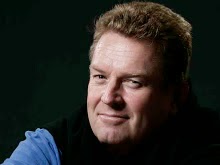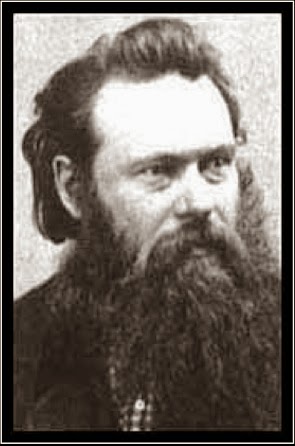Studio photography proposal
For my four week project I have decided to use life and death as my theme. I have chosen to do this theme because there is many life changing events what happen around us everyday such as child birth, a death of a loved one, vegetation, etc. I will be experimenting with product photography. I will be using a variety of different lighting modifiers. For my product shoot I will be using a snoot and if the image looks over exposed I will use a reflector.
Life and death has influenced me because there has been a recent child birth in my family and a loss of a loved one. I will be researching other artists and photographers who have used life and death as the main body of their work, I will be looking at their works. I will be using the internet and different books for all the information about life and death and the artists and photographers and what in spired them.
My previous ideas where:
- Tim Burton- Gothic, movies with death and life(corpse bride)
- Tim Burton with sexuality- showing sexuality in Tim Burton's films
- dead vegetation- dead leaves, fruit, veg
- dead animals- packaged meat
I have chosen dead animals for my final idea only because when we go to the supermarket and walk down the frozen meat isle we don't think of them being animals but just as meat. So I found some meat what I can use for my shooting.
For my test shots I used a pile of dead twigs and leafs, rotten lettuce and a skull cup.
For this image I used dead twigs and leafs. I put the camera quite close to the object. I like how the centre of the image is in focus why the rest of the image isn't. For this image I used a snoot with a silver reflector and a black backdrop. I placed the snoot on the right hand side of the product scoop and the silver reflector was on the left.The settings I had on my camera for this image are F5.6, ISO 100 and the shutter speed 1/100. If I were to change this image I would try using a softbox to see if it softens the light and I would use a golden reflector to see if it would bounce the light back a lot more than a silver one.
For this image I used some rotten lettuce leaves. I put the camera quite close to the object. I like how the centre of the image is in focus why the rest of the image isn't. I also like how the part of the image what is in focus has turned yellow and a little part of it has turned purple. For this image I used a snoot and a silver reflector and a black backdrop. I placed the snoot on the right hand side of the product scoop and put the silver reflector on the left hand side. The settings I had on my camera for this image are F5.6, ISO 100 and the shutter speed 1/100. I wouldn't change this image because I think it looks nice and interesting the way it is.
For this image I used a skull cup what is of one of Tim Burton's films 'the nightmare before Christmas'. I like how the image is just a skull. I also like how the skull looks like a warm skin tone colour instead of being white. For this image I used a snoot, a silver reflector and a black background. I placed the snoot on the right hand side and the silver reflector on the left hand side. The settings I had on my camera for this image are F5.6, ISO 100 and the shutter speed 1/100. If I where to change this image I would try and make the left side of the image more darker so there is only the right hand side you can see in detail.
For my final images I used packaged meat.
For this image I used 2 fish fingers and a pile of stem leaves from a dandelion root. I like how the light has cast a shadow on the leafs and the fish fingers. I also like how the leafs are fairly the same size apart from 2 leafs. For this image I used a snoot, a silver reflector and a white background. I placed the snoot on the right hand side and the silver on the left hand side. The settings I had on my camera for this image are F20, ISO 100 and the shutter speed 1/4. If I where to change this image I would attach string around the 2 fish fingers and stick the leafs to a piece of card and make it look like the fish fingers are swimming.
For this image I used a piece of chicken. I like how there is still some ice on the piece of chicken. Also I like the shape of the chicken. For this image I used a snoot, a silver reflector and a white background. I placed the snoot on the right hand side of the product scoop and the silver reflector on the left hand side. The settings I had on my camera for this image are F20, ISO 100 and the shutter speed 1/4. If I where to change this image I would let the chicken defrost a little bit more and change the position on the chicken.
For this image I used a sausage and a burger. I like how the sausage and the burger are still a little bit frozen. Also I like how the light has cast a shadow on the sausage and the burger. For this image I used a snoot, a silver reflector and a white background. I placed the snoot on the right hand side and the silver reflector on the left hand side. The settings I had on my camera for this image are F20, ISO 100 and the shutter speed 1/4. If I where to change this image I would try and do something interesting with the sausage and the burger so its not just plain and bland.
For this image I used some chopped up turkey. I like how the texture looks on the turkey. Also I like how the turkey has fallen into a random place. For this image I used a snoot, a silver reflector and a white background. I placed the snoot on the right hand side of the product scoop and the silver reflector on the left hand side. The settings I had on my camera for this image are F20, ISO 100 and the shutter speed 1/4. If I where to change this image I would try and get my camera closer to the turkey to try and get more of the detail on the turkey.
For this image I used a piece of red meat. I like this image because the meat looks a little bit like a heart. Also I like how there is a little bit of ice on the bottom of the meat. For this image I used a snoot, a silver reflector and a white background. I placed the snoot on the right hand side of the product scoop and the silver reflector on the left hand side. The settings I had on my camera for this image are F20, ISO 100 and the shutter speed 1/4. If I where to change this image I would add some grass and place the meat on top.

















































